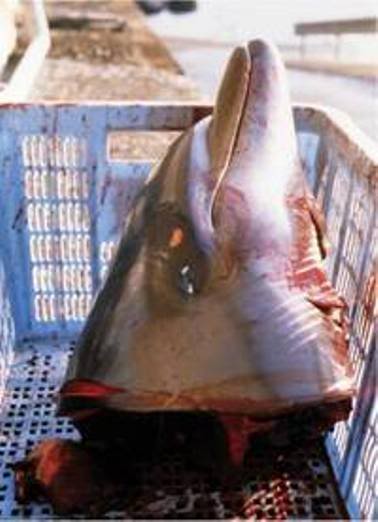Bonus Bandits: Why Are Bank Execs Making a Killing in the Midst of Catastrophe?
By Sam Pizzigati, Too Much: A Commentary on Excess and Inequality. Posted October 20, 2009.
Welcome to post-meltdown America. One year and counting after last fall’s high-finance collapse, average Americans are reeling and Wall Street is rejoicing.
America’s biggest banks, amid the shakiest economic times since the 1930s, last week announced record profits — and deposited record billions into bonus pools for their top executives and traders. How did U.S. lawmakers and officialdom respond?

In Congress, a pivotal House committee gave the green light to a Wall Street regulatory reform bill that “does not do enough,” disappointed consumer advocates quickly charged, “to protect taxpayers and our economy.”
The nation’s top executive pay regulator did some disappointing, too. “Pay czar” Ken Feinberg, the White House pick to oversee pay at the nation’s biggest bailed-outs, last week convinced soon-to-retire Bank of America CEO Ken Lewis to give up his $1.5 million 2009 salary. Why did Lewis agree? He gets to walk away, at year end, with a retirement package worth $69.3 million.
Welcome to post-meltdown America. One year and counting after last fall’s high-finance collapse, average Americans are reeling and Wall Street is rejoicing. The boom’s back!
In fact, for Wall Street’s premiere financial giant, business is booming better than ever. Goldman Sachs last week announced $3.19 billion in third-quarter earnings, about quadruple the firm’s quarterly profit a year ago. Goldman now has $16.7 billion sitting in its bonus pool.
That pool, by the end of December, will likely top off close to $23 billion, enough to pay each and every Goldman Sachs employee over $700,000 if the bonus dollars were divided equally.
The bonus dollars, past practice makes clear, won’t be equally divided. In 2007, Wall Street’s previous record year, Goldman CEO Lloyd Blankfein took home $68 million. In 2008, 212 Goldman Sachs power suits stuffed their pockets with over $3 million each.
This year figures to be even more lucrative. Goldman, as one financial analyst points out, has so far in 2009 “earned three times as much as it did in all of 2008.”
That’s not, to be sure, all good news for Goldman. In a record recession, record earnings create a bit of a public relations problem. To forestall any serious political blowback, Goldman’s movers and shakers have opened a “charm offensive.” Message: We feel your pain. Reality: Goldman feels no pain — and doesn’t intend to start any time soon.
The $200 million Goldman is now donating to charity, as the first thrust in its charm offensive, equals a mighty 6 percent of the firm’s third-quarter profit.
No other U.S. financial firm is matching Goldman’s stunning success. But you won’t find other firms complaining. One new survey, released last week, estimates that 23 top U.S. banks and hedge funds will shell out $140 billion in 2009 compensation, $23 billion more than their previous all-time record high set in 2007.
“We can’t go back,” a resolute White House press secretary Robert Gibbs told the nation earlier this year, “to the type of pay structure that incentivized wild speculation, like we had before this economic collapse.”
We now have gone back. But could the situation have turned out any differently? Could U.S. officials be doing more, given the complexities of our globalized economy, to prevent a return to standard executive pay operating procedure? They surely could.
At a minimum, U.S. authorities could be insisting, as British officials did last Wednesday, that every big bank in the nation either agree to the modest executive pay reforms that surfaced at last month’s global economic summit in Pittsburgh or lose the right to do business with the government.
The reforms the UK is imposing will keep bankers from immediately collecting all the bonus dollars they “earn” this year. They’ll have to wait several years, a delay intended to prevent bankers and traders from cashing in on risky short-term deals that later go sour.
But these UK reforms don’t speak at all to the overall size of the rewards that can go to the world’s banking and corporate elite. They should. Governments, as Institute for Policy Studies analyst Sarah Anderson noted last week on the PBS News Hour, should be leveraging “the power of the public purse to encourage more rational pay practices throughout the economy.”
Congress and the White House could do that, Anderson explained, by “limiting how much companies can deduct from their taxes” for executive pay and “using procurement policies to give preferences to companies that have more reasonable gaps between what their executives and their workers are making.”
One day after Anderson’s comments, progressive lawmakers took a daring move in just the direction she was suggesting. Progressive lawmakers in France, that is. The legislators brought before the French National Assembly the world’s boldest executive pay reform package yet.
The new French legislation, if enacted, would cap executive pay, in companies subsidized by tax dollars, at 25 times the pay of a company’s lowest-paid worker.
In all other companies, boards of directors would set the executive-worker multiple that determines the executive pay ceiling, after a process that includes worker input. Shareholders would have the final say on what that multiple would be.
Support in France for an outright income cap — a “maximum wage” — has been building since last spring when the popular French weekly, Marianne, launched a petition campaign for a “salaire maximum.” How far politically can this campaign now go?
One appraisal came last week from Jean-Philippe Huelin, the editor of the French maximum wage campaign’s online presence.
“With a little perseverance — and luck,” says Huelin, the French maximum wage drive just might become a “flagship” issue in the next French presidential election.
Filed under: CORPORATE GREED ETC..., GOVERNMENT | Leave a comment »








 AlterNet
AlterNet AuctionBytes
AuctionBytes![George Galloway (born 16 August 1954) is a British politician, author and broadcaster, who has been a Member of Parliament since 1987, and is particularly known for his anti-war views.[1] He was a Labour MP twice, first for Glasgow Hillhead, and later for George Galloway](http://upload.wikimedia.org/wikipedia/commons/thumb/d/db/George_Galloway_2007-02-24.jpg/225px-George_Galloway_2007-02-24.jpg) George Galloway
George Galloway![The Huffington Post (often referred to as HuffPost) is an American liberal news website and aggregated blog founded by Arianna Huffington, Kenneth Lerer and Jonah Peretti, featuring various news sources and columnists.[2] The site offers coverage of polit Huffington Post](http://photos-d.ak.fbcdn.net/hphotos-ak-snc1/hs278.snc1/10516_154248562606_592222606_2753737_1043884_n.jpg) Huffington Post
Huffington Post Michael Moore
Michael Moore Red Ink Diary
Red Ink Diary Wired Magazine
Wired Magazine